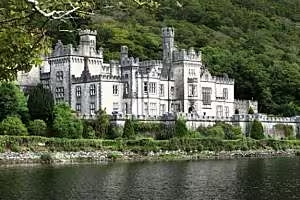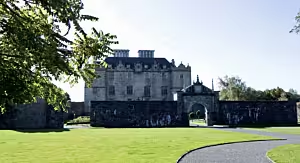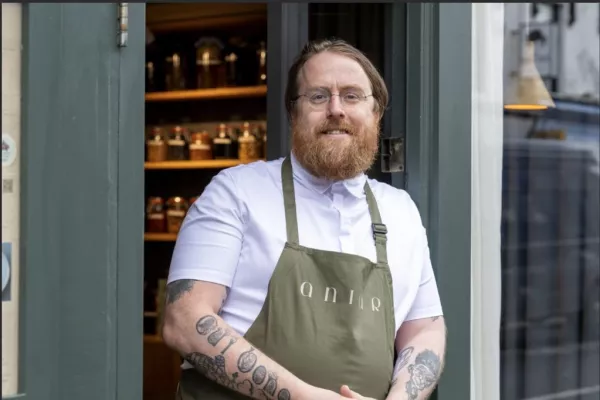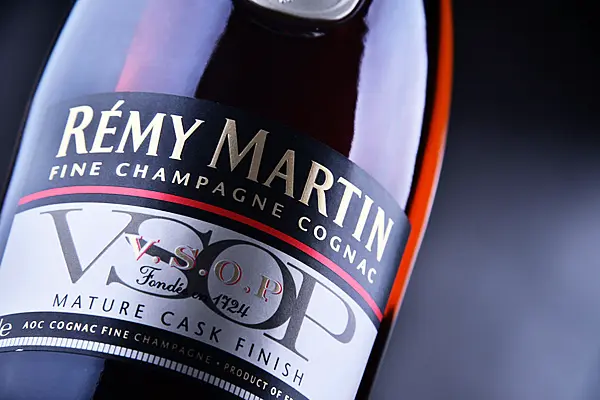Galway is a county that has something for everybody, whatever temperament they might be. Nature lovers can visit an abundance of nature parks and reserves, not to mention the wild beauty of the Connemara region, or the Aran Islands located off the coast of Galway.
Visitors looking for a fun few days can visit the Galway races in July or the Galway International Oyster Festival in September. Additionally, the Galway Arts Festival in July is a must see and offers theater, music, visual arts, and street performances.
Overall, Galway is a vibrant city with a bustling nightlife, great pubs and friendly locals.
The Top 10
With all these factors in mind, Hospitality Ireland decided to examine the top ten visitor attractions in Galway, based on Fáilte Ireland's Visitor Attractions Survey 2022.
The year 2019 was chosen as a good indicator because it was pre-covid and so the sample was more in line with tourists behaviour in normal circumstances, rather than during an exceptional event like the coronavirous pandemic.
1. Kylemore Abbey & Garden
(426,738)
Located just over one hour from Galway City, Kylemore Abbey & Garden is the number one tourist attraction in Galway by visitor numbers as of 2022. Kylemore Castle was built in the late 1800s by Mitchell Henry MP, a wealthy businessman, and liberal politician.
Today Kylemore Abbey is owned and run by the Benedictine community who have been in residence here since 1920. It offers woodland and lakeshore walks, impressive buildings and Ireland’s largest walled garden.

2. Connemara National Park
(232,443)
Connemara National Park includes part of the Twelve Bens mountain range, including Benbaun, the highest peak in County Galway at 725m.
One of the highlights of the National Park is reaching the summit of Diamond Hill for panoramic views of Tully Mountain (known locally as Letter Hill), Kylemore Abbey and the Twelve Bens.
Expect tough and demanding hikes over very mixed terrain that includes bogs and wet grasslands in the lowlands and exposed bedrock and scree at higher elevations. Although the mountains in Connemara are not very high, hiking them is very challenging and those walking the hills should be prepared.

3. Dún Aonghasa
(119, 893)
Dún Aonghasa is the largest of the prehistoric stone forts of the Aran Islands.
The fort is over 3,000 years old. Excavations have revealed significant evidence of prehistoric metalworking, as well as several houses and burials. The whole complex was refortified in AD 700–800.
Dún Aonghasa is about 1km from the Visitor Centre and is approached over rising ground. The last section of the path is over rough, natural rock and care is needed.

4. Galway Atlantaquaria
(113,697)
Galway Atlantaquaria, Ireland’s largest native species aquarium, had 96,500 visitors in 2022.
An all-weather and fully accessible attraction is open throughout the year, the aquarium allows visitors to explore the diversity of life in oceans, rivers, lakes and canals.
Galway Atlantaquaria is located in Salthill overlooking Galway Bay along the Wild Atlantic Way.

5. Galway City Museum
(102,798)
Galway City Museum takes sixth place with 103,798 visitors as of 2022.
The Museum is focused on preserving and sharing Galway’s archaeology, history and sea science through its collections, exhibitions, events and online learning resources.
It is a great day out for all the family and combines learning with fun.

6. Turoe Pet Farm And Leisure Park
(94,740)
Turoe Pet Farm first opened in 1993 is now one of the leading visitor attractions in the West of Ireland. The family-run enterprise is situated in a rural setting near a village called Bullaun, 4km from the town of Loughrea which is off the M6 on the main Galway/Dublin route.
Visitors can take a walk around the 14 acre park which boasts a number of nature trails and a pet farm including ponies, donkeys, goats and sheep.
If it is raining, Turoe Pet Farm has one of the largest bouncing castles in Europe known as Inflable City!

7. The Sheep & Wool Centre
(74,000)
The Sheep & Wool Centre was founded in 1992 by Michael and Kathleen O’Toole with a view to preserving and protecting the traditions and skills of the sheep and wool industry in Connemara.
Visitors are given an insight into the importance of sheep and wool in Connemara's past.
Those attending can learn the history of the local woollen industry and see the process of how sheep’s fleece is made into cloth through displays and demonstrations.

8. Portumna Castle
(33,527)
Portumna Castle is a Jacobean-style building which remained the main seat of the de Burgo clan for over 200 years until it was gutted by fire in 1826.
Visitors cans enjoy the geometrically-laid gardens to the north and the Willow Maze which incorporates several different willow varieties.
A 17th-century potager kitchen garden has been restored to its original state and is organically planted with flowers, herbs, hollies, and vegetables.

9. Aughnanure Castle
(28, 041)
Aughnanure Castle is a 16th century castle located close to Lough Corrib
It was built in the 16th century as a stronghold of the O'Flaherty clan, and is renowned for its unusual double bawn.
The Castle is a particularly well-preserved example of an Irish tower house and visitors will find the remains of a banqueting hall, a watch tower, bastions and a dry harbour.

10. Hall of the Red Earl
(25,149)
Hall of the Red Earl is the oldest building to be excavated within Galway's medieval walls.
The site which is invigilated by Galway Civic Trust dates to the 13th century.
It is linked to the founding of Galway by the Anglo-Norman De Burgo family at this time.










